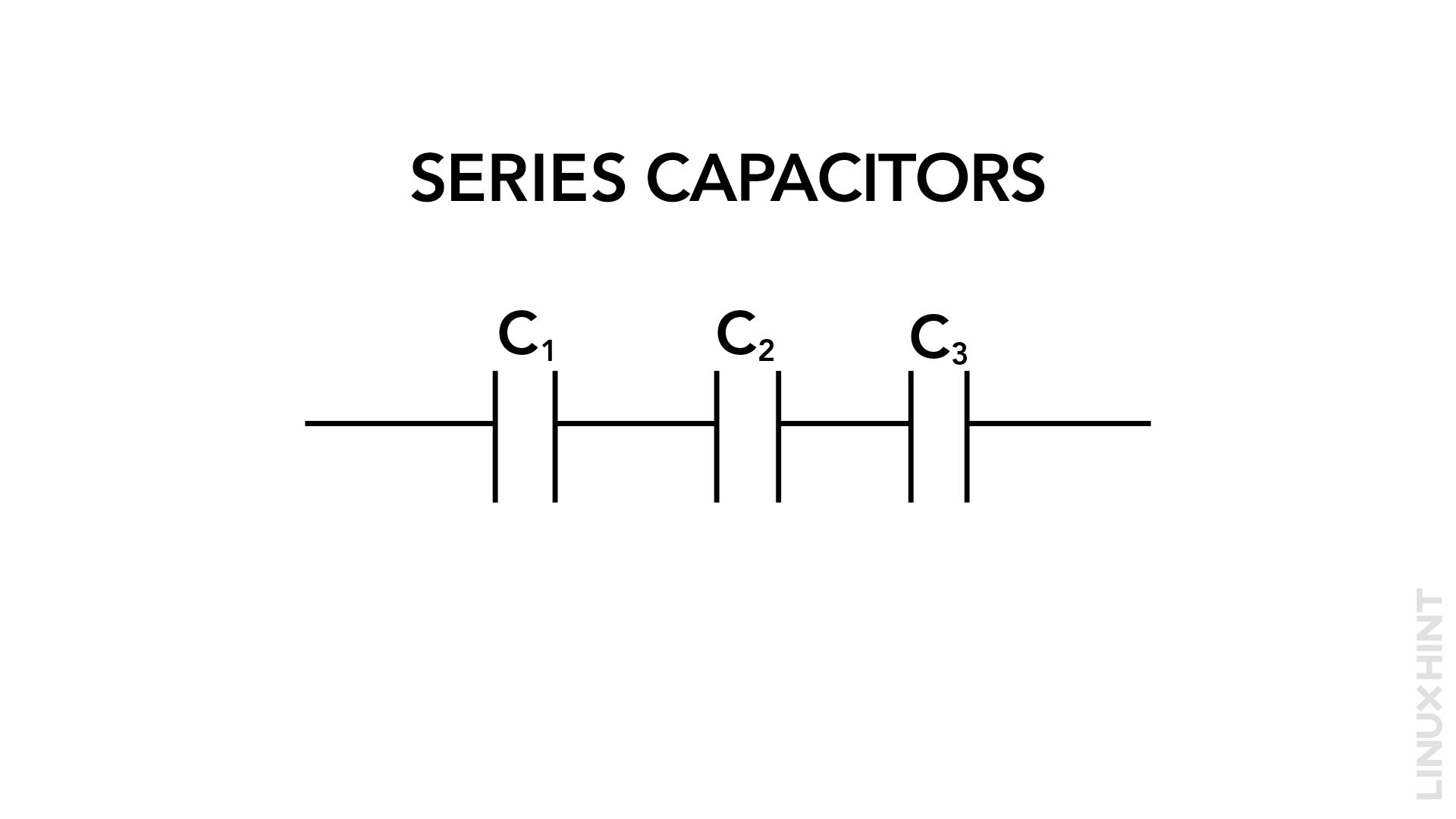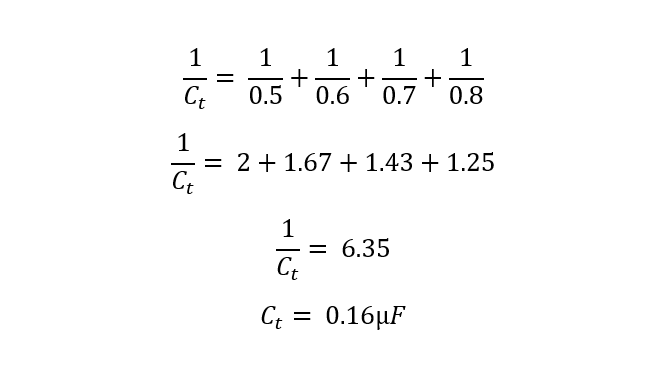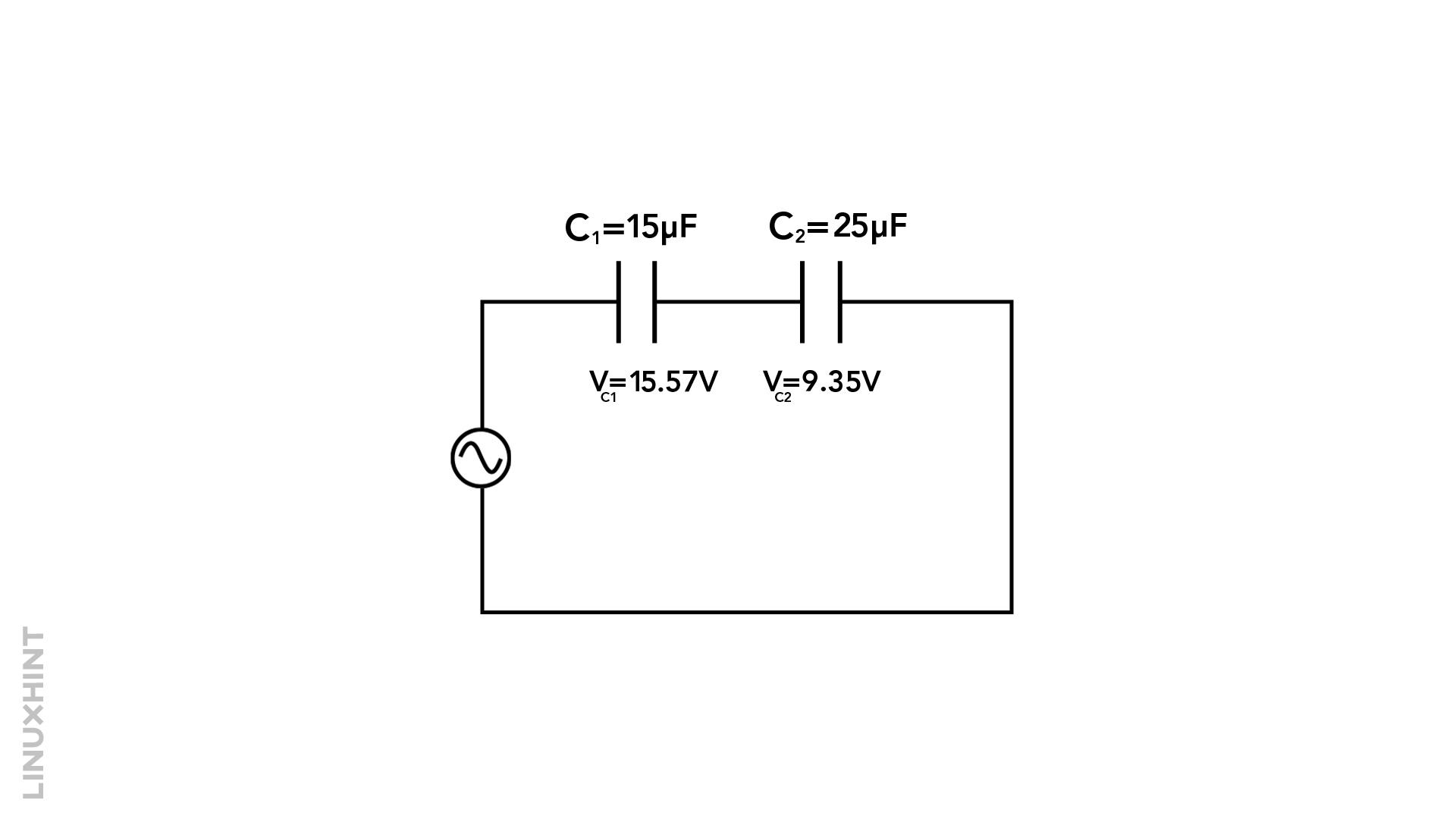Capacitors in Series
The series connection can be understood as just like a chain connecting different electrical components. It is an end-to-end connection in which the first element’s last end is linked to the second element’s first end, and so forth. Capacitors in series follow the same analogy. They are connected from end to end with one another as illustrated below:
Equivalent Capacitance in Series
Equivalent capacitance in series is calculated by adding up their reciprocals in the first step. Finally, the net capacitance can be calculated by reciprocating the total sum obtained in the first step as described below:
Total capacitance is the reciprocal of the sum of the reciprocals of all individual capacitance. Consider there are four capacitors of 0.5uF, 0.6uF, 0.7uF & 0.8 F and to calculate the capacitance:
Voltage & Current Distribution in Series Capacitor Circuits
The voltage drop across each capacitor depends on the capacitor values. The larger the capacitor, there will be larger the voltage drop, and vice versa.
As it is a long chain with a single passage, the same current passes through all the capacitors in the above circuit. Calculate the voltage drop across two capacitors with 15.57F & 25uF magnitude connected across a 25V ac supply:
For voltage drop across capacitor 1 using voltage divider formula of two resistances in the network:
Replacing resistance with :
Similarly, the voltage drops for capacitor 2 is given by:
Conclusion
The total capacitance in a series connection is less than each capacitor capacitance, while the current remains the same due to the single path in the circuit. The voltage drops vary with the magnitude of each capacitor. However, the sum of voltage drops shall equal the supply voltage.










